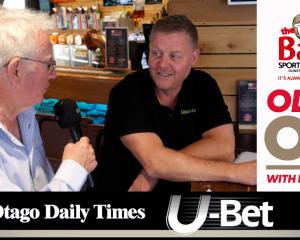
Southern clubs have hit back at suggestions some of New Zealand's smaller racetracks are unsustainable.
However, the national body, New Zealand Thoroughbred Racing (NZTR), is remaining tight-lipped for now, following a meeting of industry representatives to discuss potential solutions.
NZTR chief executive Bernard Saundry said yesterday's meeting had been ''productive'', but a full statement would not be made until later today.
The meeting came after the postponement or cancellation of seven race days since New Year's Day, including meetings at Waikouaiti, Ellerslie, Thames and, yesterday, Hokitika.
Most were cancelled when rain fell on parched tracks, making them slippery and dangerous to horses and jockeys.
The Omakau races were rescheduled after a malfunctioning sprinkler caused a section of track to become unsafe.
The string of cancellations prompted criticism from the New Zealand Trainers' Association, whose president, Tony Pike, said this week New Zealand had too many small, underused tracks and needed consolidation.
That drew a strong response yesterday from Tony Lepper, president of the Central Otago Racing Club, which used the Omakau track.
Mr Lepper said the idea of consolidation was ''patently ridiculous'' in Otago, where racing infrastructure had traditionally developed on the coast while the population attending meetings was increasingly found in Central Otago.
''To regionalise it, and make it, say, Dunedin-based - well, that's not where the people are, and people are what makes racing happen,'' Mr Lepper said.
Though the club had experienced its own track problems, it had also received ''pretty good support'' from NZTR, which offered guidance on track preparation before meetings, he said.
Part of the problem lay in a developing health and safety culture, which meant race stewards were more risk-averse.
''I'm certainly noticing ... the minute there's a problem, then the stewards are reluctant to carry on with a programme, no matter what you do, and that's because they don't want to be seen to send people out on what could turn out to be an unsafe track.''
That increased desire for ''perfect tracks'' would drive the industry towards centralisation, he feared.
''The thing about getting perfect tracks is they've got to go all-weather, and you're only going to have one or two of those in New Zealand.
''That's not the answer,'' he said.
Kurow Jockey Club vice-president Heather Gray said clubs also needed to do more to ensure they were ready for race meetings, and ''put put their hand up'' if they needed help.
Her club watered its track for 40 days consecutively, at a cost of $100 per day, to prepare for its last annual meeting, she said.
''That's quite a commitment from us, but we do it to ensure that we've got a safe track, first and foremost, and a good track for the horses.''
The club had held meetings annually since 1891, and drew a crowd of about 4000 people to the last event on December 30, she said.
That was the largest meeting for the club ''in quite some time'', underscoring how ''vital'' such events were to small communities, but the rash of recent negative headlines worried her.
While it was ''possibly true'' some clubs were unsustainable, an ''inclusive'' working group - including country clubs - should be established to consider the issues and find solutions, she said.
Without action, owners and breeders could step away from the industry if country courses closed, she said.
''You're probably going to step back or think twice about breeding or owning.''
- Additional reporting from RNZ












